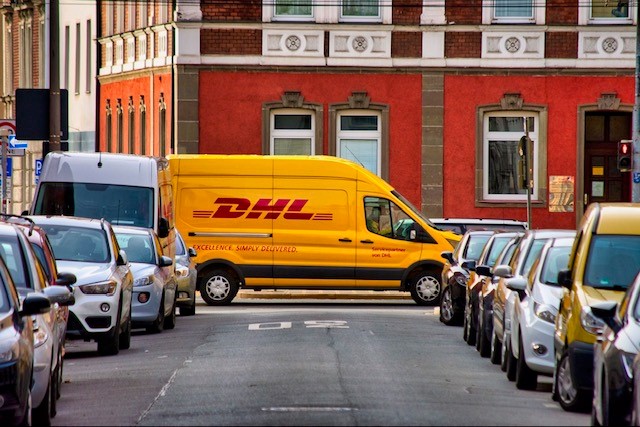Delivering Pandora's Box? The Puzzle of Sustainability Impacts from Out-of-Home Delivery

Before the summer, the city of Barcelona garnered attention for more than just FC Barcelona's first La Liga victory without Lionel Messi. The Barcelona city council approved a new delivery tax aimed at addressing a growing list of issues tied to home deliveries—emissions, safety hazards, and traffic congestion, to name a few. One of the ambitious targets is to have 40% of e-commerce purchases delivered to pick-up points instead of directly to consumers' homes. But as cities like Barcelona wrestle with home delivery issues, a question looms large: Is out-of-home delivery truly the more sustainable alternative?
The Push for Sustainable Delivery Options
The Barcelona example should not be seen as an indication that the push towards more sustainable e-commerce deliveries comes from governments alone. Delivery companies are also taking up the mantle, with their fleets increasingly going electric and delivery options being dressed in green leaves and slogans like “zero emissions”. Barcelona is also not the only example of government action. Belgium’s Federal Government, for instance, is amid drafting legislation mandating delivery companies to report on their sustainable delivery efforts. But do we know what "sustainable" actually means in this context?
Is Out-of-Home Delivery Truly the Greener Choice?
One delivery option often presented as sustainable is out-of-home delivery. While it may be a viewed as a relatively new delivery option, out-of-home delivery actually dates back to the 1990s, when the first pick-up points began appearing in convenience stores. Flash forward to today; in the city of Groningen alone, there are over 150 pick-up points. Most are located in shops, with a few automated parcel lockers recently being placed in both private and public spaces.

When looking at the delivery operations, out-of-home delivery shows great promise. Imagine a delivery van navigating through a city, dropping off packages to over a hundred home addresses. Each additional package delivered to a pick-up point streamlines the van's route, spending less time in a particular street or area. This potentially reduces both congestion and emissions. The equation appears straightforward: more out-of-home deliveries equal a more efficient and sustainable process.
The Missing Piece: Consumer Travel
However, to see the full picture, we must also factor in consumer travel. Are you cycling to a nearby pick-up point? Definitely a win for sustainability. But what if you hop into a car just for that quick drive to collect your parcel? This could negate the environmental gains made by more efficient delivery operations, creating a proverbial tug-of-war between efficiency gains on the delivery side and additional travel on the consumer side.
Consumers’ Choice of Transportation Mode
Buijs explains this: “In a recent study, PhD-candidate Rudy Niemeijer and I used data from over 54,000 consumers surveyed about their trip to a pick-up point in the Netherlands in the first half of 2021. A majority of consumers do choose sustainable modes of transportation: 32.2% went by bike; 35.1% on foot. Still, 32.8% of the trips made to pick-up points was done by car.
Our study also uncovers the distance to a pick-up point as an important factor in transportation mode choice. The logic is intuitive: the closer a consumer lives to a pick-up point, the higher the likelihood they will opt for a sustainable mode of transportation. Where a consumer lives plays a role too. Consumers living in densely populated areas seem to travel by bike or on foot for reasons other than the distance to the pick-up point too – for example, because they do not own a car.”
The Delicate Balance of Sustainability
“In our study, we modeled how pick-up points affect delivery route efficiency to balance those efficiency gains against additional consumer travel. Yes, most consumers lean towards sustainable modes of transportation when visiting a pick-up point. However, almost a third opt for cars, making it an important variable in the sustainability equation. Even more striking, car journeys represent over half the total distance traveled to and from pick-up points.
While out-of-home delivery clearly makes delivery routes more sustainable, these sustainability benefits are quickly offset by consumer travel. This holds even when nullifying customer travel emissions if they combine their trip to the pick-up point with other purposes, such as going to the supermarket or picking up their kids from sports – which was the case in 60% of car trips in the survey.
When looking at urban versus suburban and rural areas, a more nuanced picture emerges. In densely populated areas, where customers travel by bike or on foot more often anyway, and where a pick-up point is usually close by, out-of-home delivery can be expected to yield sustainability benefits. As the city sprawls into sub-urban areas, the sustainability benefits of pick-up points quickly dwindle. In rural areas home delivery is the more sustainable delivery method in all but very rare situations.”
The Shift to Electric Vehicles
The rapid electrification of delivery fleets adds another layer to this complex issue. As cities witness a transition to fully electric delivery vehicles, the adoption rate of electric passenger cars is much slower. This growing disparity can negatively tip the balance against out-of-home delivery from a carbon emissions perspective.
Key Takeaways and Next Steps
So, where does that leave us? While the sustainable impacts of pick-up points strongly depend on the local context and consumer travel, the convenience and efficiency of out-of-home delivery mean its appeal is unlikely to wane. Indeed, delivery companies will probably champion it even more in the future. Campaigns like PostNL's "Tot snel!" (See You Soon!) signify this trend.
More out-of-home delivery locations means more consumers living closer to a pick-up point, which will stimulate consumers to opt for sustainable transportation modes. But as this delivery method proliferates, so does the necessity for comprehensive policy approaches; ones that consider the various types of existing out-of-home solutions and identify gaps where new locations could bring about sustainability benefits.
Key Research Projects and Publications
-
Niemeijer, R., & Buijs, P. (2023). A greener last mile: Analyzing the carbon emission impact of pickup points in last-mile parcel delivery. Renewable and Sustainable Energy Reviews, 186, Article 113630.
-
Dobber, R., & Buijs, P. (2023). Policy approaches for placing parcel lockers in public space. In: Proceedings of the 9th International Physical Internet Conference.
These studies have received funding from the European Union’s Horizon 2020 research and innovation programme under grant agreement No 861833. ULaaDS is a project under the CIVITAS Initiatve.

